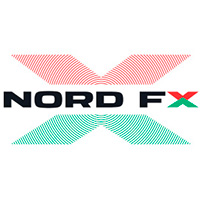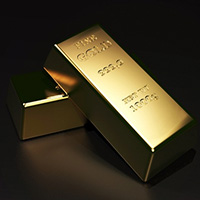The "Goldilocks scenario" in the financial world refers to a situation where economic conditions are not too hot, not too cold, they're just right - but just right for what? Sure, inflation seems under control, the economy is said to be growing steadily, and borrowing costs are falling, but is it really creating a favorable market environment for traders?
Goldilocks stocks
The stock market has started the year with some of its best performances in decades, but whether the trend will continue is contingent on a favorable economic scenario of reduced inflation, sustained growth, and lower borrowing costs. After losing $14 trillion globally in 2022, the stock markets have recovered $4 trillion this year already. China's easing of Covid-19 restrictions is said to have boosted the Hong Kong Hang Seng Index (HK50) to double-digit gains, and Europe's index (STOXX50) had its best start to the year on record.
Last Thursday, the S&P 500 increased due to better-than-anticipated results from Meta, boosting investor confidence in technology shares that had previously dragged down the market. Meta's Q4 results showed a beat in revenue and a $40 billion stock buyback announcement, causing a 19% surge in its stock. The S&P index rose by 0.6%, while the tech-focused Nasdaq Composite rose by almost 1.9%.
The positive news also impacted other tech giants, causing Alphabet to increase by 4%, Amazon by 3%, and Apple by 1%. The tech sector has been performing well in 2023, driven by investor hopes of a pause in the Federal Reserve's interest rate hike due to cooling inflation. The S&P 500 information technology sector has increased by 11% this year, following a 28% decline in the previous year.
Bank optimism
There are signs that inflation has peaked, and all central banks may soon pause rate hikes, with markets expecting a balanced outcome of lower borrowing costs and a world that is recovering from the brink of recession. January's metrics are significant as they reveal investors' portfolio preferences for the year ahead, though some argue that this month's rally may just be a temporary state of irrational confidence if rates continue to rise.
December saw the first decrease in US consumer prices in over 2 and a half years, down to 6.5%. Inflation in the eurozone has also slowed, although recent data showed a rise in consumer prices in Spain for the first time in six months.
The reopening of China has led to a global boost in buying signals, fueling rallies in the Thai baht, Brazilian real, and Australian dollar. Emerging market debt issuance also had a record start to the year. Additionally, Europe's declining gas prices have alleviated concerns of a potentially deep recession and the downturn in US business activity has also subsided.
The bottom line
Not everyone shares the same optimistic outlook. Some analysts doubt the sustainability of the current market conditions, characterized as a temporary "Goldilocks scenario" of slowing inflation and easing monetary policy. They warn that the cross-asset rally in January mainly indicates that investors are adjusting after a bleak 2022 and that it may not last if interest rates rise.
Despite several tier-1 news sites suggesting that the formation of a goldilocks market is positive, it’s important to understand that a medium means traders have a difficult decision about whether to go long or short. No trend is forming, and there’s no reversal in sight. And since the market prices are neither high nor low, it means any trade entered will likely have a limited price action within a narrow range, which limits profit potential.
While the goldilocks scenario is a good sign in relation to the global economy, only traders risking high leverage will be able to capitalize on market moves. So, unless you’ve got a specific asset in mind and you’ve done your homework, caution is advised until a trend or reversal shows up.
 Trump has declared that the United States could become the global capital of the crypto industry. To achieve this, he proposes reducing regulatory pressures.
Trump has declared that the United States could become the global capital of the crypto industry. To achieve this, he proposes reducing regulatory pressures. Forex trading is a captivating endeavor, promising both active and passive income streams. Yet, mastering forex is a continuous journey that transcends expertise levels, be it a novice or a seasoned trader...
Forex trading is a captivating endeavor, promising both active and passive income streams. Yet, mastering forex is a continuous journey that transcends expertise levels, be it a novice or a seasoned trader... In a resounding victory, NordFX, a prominent brokerage firm, has been crowned the "Best News & Analysis Provider" of 2023...
In a resounding victory, NordFX, a prominent brokerage firm, has been crowned the "Best News & Analysis Provider" of 2023... Errante, the premier online broker, is dedicated to delivering top-tier services and forging long-lasting, trust-based relationships with our clients. Our mission is to enhance your online trading journey...
Errante, the premier online broker, is dedicated to delivering top-tier services and forging long-lasting, trust-based relationships with our clients. Our mission is to enhance your online trading journey... Gold, a precious metal revered for its value for centuries, has found its place in the world of trading. Trading gold has become a popular way to invest in the commodity market...
Gold, a precious metal revered for its value for centuries, has found its place in the world of trading. Trading gold has become a popular way to invest in the commodity market...